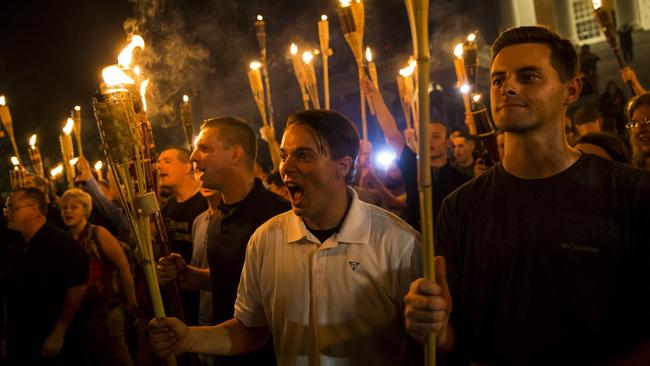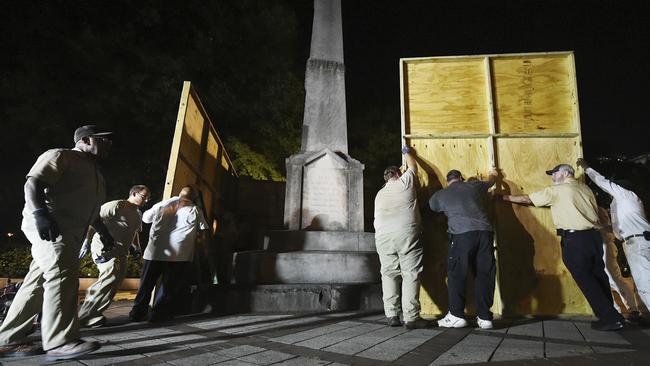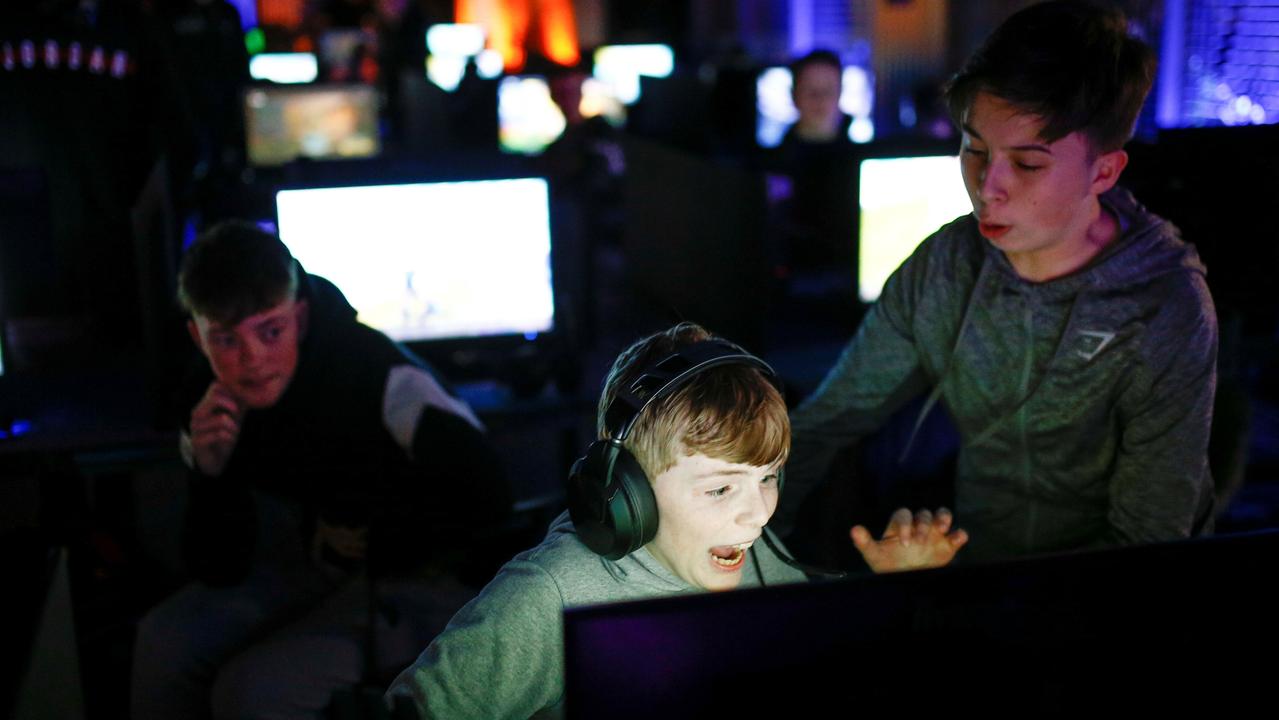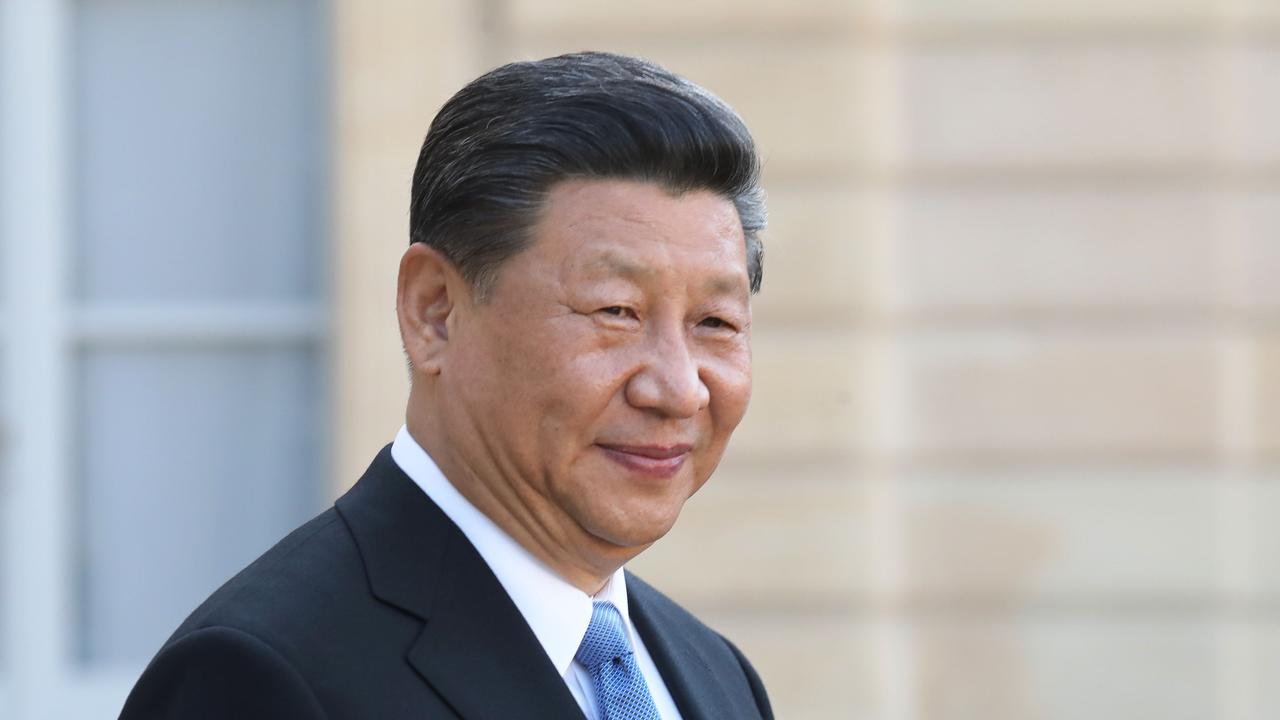Charlottesville: the white flames of hate
The advent of Donald Trump has emboldened the far right.

The white nationalist drove from South Carolina. The self-described patriot trekked from Tennessee. The college student espousing white pride flew in from Nevada.
The right-wing extremist movement, which until recently was fragmented, starved for members and lacking steady leadership, rarely was capable of uniting its forces as it did last weekend. The mayhem in Charlottesville was a signal that, even if not numerous, these groups are unifying.
Patrick LaPorte IV, 35, a white nationalist from South Carolina who attended the rally, says he was drawn to the event even though there wasn’t a single group driving the charge, but rather a loose conglomeration of like-minded people connected on social media. LaPorte, who brought a mouth guard with him for protection in the event of a brawl, says he isn’t bothered when people call him a Nazi, though if he were to label himself he would say he subscribes to “white identity”.
In the past, he says, white nationalists might have been scared of showing their faces, but for many those days are over.
For law enforcement officials and others who have long tracked the extremist groups that descended on Charlottesville, the attendance of so many disparate elements made the gathering a watershed. Although only several hundred people showed up, far fewer than the tens of thousands who have gathered to demonstrate against Donald Trump or support immigrant and women’s rights, it was among the largest gatherings of its kind in decades.
Among the factors driving this new co-operation: a web-driven rebranding of white nationalism that has broadened its reach and allowed groups to work together; a wave of new young leaders that helped bridge old divisions; and President Trump’s remarks on immigrants, Muslims and media bias, which have left such groups feeling emboldened.
Michael German, a former Federal Bureau of Investigation agent who worked undercover in white supremacist and neo-Nazi groups in California and Washington in the 1990s, says back then they were so antagonistic towards each other that anyone joining one group was barred from others.
The weekend rally showed that attendees — including white nationalists, neo-Nazis and other groups including self-described defenders of southern heritage and the first amendment — were willing to put aside ideological differences to get behind a platform designed to appeal to the Trump administration, which they perceive as sympathetic to their causes, German says.
“What we’ve seen is that these groups are coming together and are maximising their opportunity to get their point of view across,” he says. “Not just to the nation but to actually influence policy.”
Many leaders of the movement backed Trump during his campaign; they continue to back his leadership and support his disdain for the media. Eli Mosley, director of events for Identity Evropa — a group describing itself as “a generation of awakened Europeans” — and one of the Charlottesville rally’s organisers, says Trump gave groups such as his “a megaphone” for their “message and ideas”.
“I would say Trump is not one of us; however, he does have an implicit sense of white identity,” he says. “Maybe he doesn’t realise it, but he’s distinctly implying it.”
The Charlottesville rally, dubbed “Unite the Right”. was organised to protest against the removal of a statue of Confederate general Robert E. Lee. It quickly descended into violence. A car driven by an Ohio man with a history of sympathising with Nazis ploughed into a crowd, killing a woman and injuring 19 other people. Two police officers who were monitoring the rally died on Saturday when their helicopter crashed.
It was the latest expression of an extremism that has flared throughout US history, especially during periods of social, economic and political stress. In the 1910s and 20s, the revived Ku Klux Klan drew millions. During the Depression, the German American Bund, a Nazi organisation, drew supporters with attacks on leftists and Jews. Splinter groups of the KKK and other white nationalist organisations committed violence against civil rights workers and blacks during the 50s and 60s. By the 70s, white nationalist groups were splintered and small yet still showed a propensity for violence. The 1995 Oklahoma City bombing, in which the main conspirator had been influenced by white supremacist and anti-government ideas, killed 168 people and led to an FBI crackdown.
Many followers of those groups operated “on the edges of criminality”, says Kathleen Blee, a University of Pittsburgh sociologist who has written books about the KKK, so it became easy for law enforcement to recruit informants.
The Charlottesville gathering, she says, was “one of the first cases where people from old racist movements, the David Dukes, came together with the new alt-right in a common project. It’s remarkable that they could pull together this event.”
The loose agglomeration has coalesced on social media — Facebook, YouTube, Twitter — and online chat rooms. “I can punch a button and have a message out to 10,000 people immediately,” says Preston Wiginton, 52, who recently announced a “White Lives Matter” forum on September 11 at Texas A&M University; the university cancelled it on Monday.
Wiginton says groups such as his are starting to work closely with similar organisations. Meetings such as Charlottesville show there is “an uprising” under way by whites against “displacement and marginalisation” caused by “diversity and multiculturalism”. Some newer alt-right groups boast slick websites that have drawn new members. Identity Evropa’s website features photos of young, well-dressed members, essays on white superiority, and “boutique” merchandise for sale. The organisation is considered a white supremacist hate group by a range of organisations, including New Jersey’s Office of Homeland Security and Preparedness.
Mosley of Identity Evropa disputes the hate group characterisation, saying such designations are intended to stifle free speech.
The broader movement has developed greater cohesion around younger public leaders including white nationalist Richard Spencer, who runs the National Policy Institute, an organisation dedicated, in its words, to “the future of people of European descent in the US”, and is considered a founder of the alt-right. Spencer promotes white supremacist ideology and has called for a white homeland.
Jared Taylor, editor of white nationalist website American Renaissance, says Trump’s influence on the movement has been exaggerated. “This movement was growing with him, without him, and will continue to grow once he’s gone,” he says. “He was exciting, of course, because some of his policies were congruent with some of the policies we would like to see implemented.”
Trump faced criticism from Republicans and Democrats for not immediately condemning white supremacists for the Charlottesville violence, instead at first blaming “many sides”.
On Monday he singled out white nationalist groups by name for condemnation. On Tuesday he backtracked, saying again that he blamed “both sides” for the violence and defending those who showed up to protest against the removal of the Lee statue.
Several chief executives resigned from an advisory council to the Trump administration in an apparent protest against his stance, and Trump tweeted that he was ending the council. The White House dismissed white nationalist claims that Trump’s reticence to immediately issue a condemnation counts as an expression of support. “The President has been clear on this in his condemnation of these groups,” spokeswoman Sarah Huckabee Sanders says in an email.
In some ways, the internet is proving to be as much a liability as a booster for the movement. Some who attended the Charlottesville rally are being identified on social media by counter-protesters demanding they be fired from their jobs. The Daily Stormer, a prominent neo-Nazi website, was kicked off hosting platforms GoDaddy and Google for hate speech violations after a social media blitz by progressive activists.
The movement’s size can be difficult to ascertain because membership is secretive and fleeting, meaning there is little detailed information on how many people are actively involved or espouse their beliefs. A report this year by the Anti-Defamation League found that from 1993 to 2017 extremist right-wing individuals and groups were involved in 150 terrorist acts, attempted acts, plots and conspiracies in the US.
The ADL found white supremacists were behind 43 per cent of these incidents or conspiracies, anti-government extremists accounted for 42 per cent, while anti-abortion extremists were responsible for 11 per cent.
Some white nationalists who attended the Charlottesville rally say that despite the violence that marred the event there is a renewed sense of urgency that their voices be heard. Attendees say in interviews that finally there is an administration that seems to acknowledge their view that immigration is contributing to the country’s demise.
“We have about a 20-year window that’s going to allow for democratic political change,” says LaPorte.
He says the movement’s lack of cohesion doesn’t matter online. Still, there was some co-ordination before arrival, he says. Some people came dressed in dark combat fatigues and others, like him, in jeans and polo shirts.
At the weekend march, the infamous hoods and robes of Klan rallies or brownshirts of neo-Nazis were hard to find, with many dressing similarly to LaPorte. Even those who wore extremist garb often eschewed better-known symbols such as swastikas and instead wore pins that read “88”, a number that serves as shorthand for Heil Hitler.
At the rally, older southern-pride proponents with scraggly beards and militants dressed in all black with pants tucked into their combat boots rallied alongside young, clean-shaven men with neat haircuts, and at least one whose blazer sported a pocket square.
In one photo, a smartly dressed young man is seen hoisting a torch, his mouth agape as he shouts while marching through the city. Peter Cvjetanovic, a 20-year-old student at the University of Nevada, says he is the man in the picture.
Cvjetanovic says he joined Identity Evropa a month earlier and found out about the rally via an internal web server the group uses. He flew to Virginia “to honour and respect white heritage in all its good and all its bad”. He says he was pleased so many organisations came together in Charlottesville. While he was unsettled by the violence, he adds, he has felt compelled to stay true to his ideology since returning home, where he claims he has received death threats.
“The world hates me no matter what I do,” he says. “I can’t back down now.”
Doc Smith, who sells beef jerky in Clarksville, Tennessee, at first wasn’t sure he wanted to attend last week’s gathering in Charlottesville because he thought marching alongside neo-Nazis would reflect badly on the organisation to which he belongs, a self-described patriot group called the Hiwaymen.
Last Friday morning, Smith, 50, who has travelled the country to protest against the removal of Confederate monuments, put that thought aside and climbed into his pick-up truck for the nine-hour drive to Virginia. When he returned home on Sunday, despite his sadness over the death of a young woman, he felt the movement would be inspired. His Facebook page is a storyline of videos and updates from Charlottesville.
“Watch the movement explode behind what happened in Charlottesville,” he says. “The next time we come back, there may be thousands.”
The Wall Street Journal
GROUPS THAT WERE IN CHARLOTTESVILLE
ALT-RIGHT
The League of the South
A group based in Alabama that agitates for a “free and independent southern republic” that would reject non-European culture and people. Founded in 1994 by Michael Hill, a history professor. He is said to have given a speech at the Unite the Right rally. A member of the Florida chapter of the group was among those arrested.
Vanguard America
One of several white supremacist organisations to have formed after last year’s US presidential election, the group has been distributing nationalist posters on college campuses and on its website. It denounces Jews and other minorities, and multiculturalism. James Fields, the Ohio student who allegedly drove his car into a crowd of counterprotesters, was pictured carrying a shield emblazoned with the logo of Vanguard America, though it has denied he was a member. Protesters shouted its “Blood and Soil” motto.
Radical Agenda
A podcast hosted by Christopher Cantwell, a libertarian turned fascist from New Hampshire, who helped to organise the march. Cantwell came to the protest with a band of supporters and was heavily armed, telling Vice News that he was “trying to make himself more capable of violence”.
Loyal White Knights of the Ku Klux Klan
A chapter based in North Carolina. About 50 members of the group had gathered in Charlottesville for a separate demonstration last month, also to protest against the removal of Confederate statues. After the weekend’s events its leader, Justin Moore, said he was “glad” a woman had been killed. “They were a bunch of communists out there protesting against somebody’s freedom of speech, so it doesn’t bother me that they got hurt at all,” Moore said. David Duke, a former KKK leader, was billed as a headline speaker.
National Policy InstituteA “think tank” founded by Richard Spencer, who coined the term
“alt-right” to describe groups that sympathise with white supremacists. Spencer was due to be a headliner for the rally and led the march on the University of Virginia the previous evening. The NPI became notorious after a video showed supporters raising their arms in a Nazi salute last year. It runs several publications and organised another march in Charlottesville earlier this year.
RADICAL LEFT
Black Lives Matter
A black activist group formed in 2012 in the aftermath of the shooting of an unarmed black youth in Florida, originally as an online movement. Based in Missouri, it has been blamed for vandalism and riots following shootings of African-Americans by police. Some conservative commentators contend that it is “a violent, racist movement”.
Antifa
An abbreviation for “anti-fascist”, the militant leftist group does not oppose using violence. The group was said to be behind the vandalism in Washington in January at the inauguration of Donald Trump, and came to national attention after shutting down a planned speech by Milo Yiannopoulos, a former editor of Breitbart, at the University of California at Berkeley.
The Times



